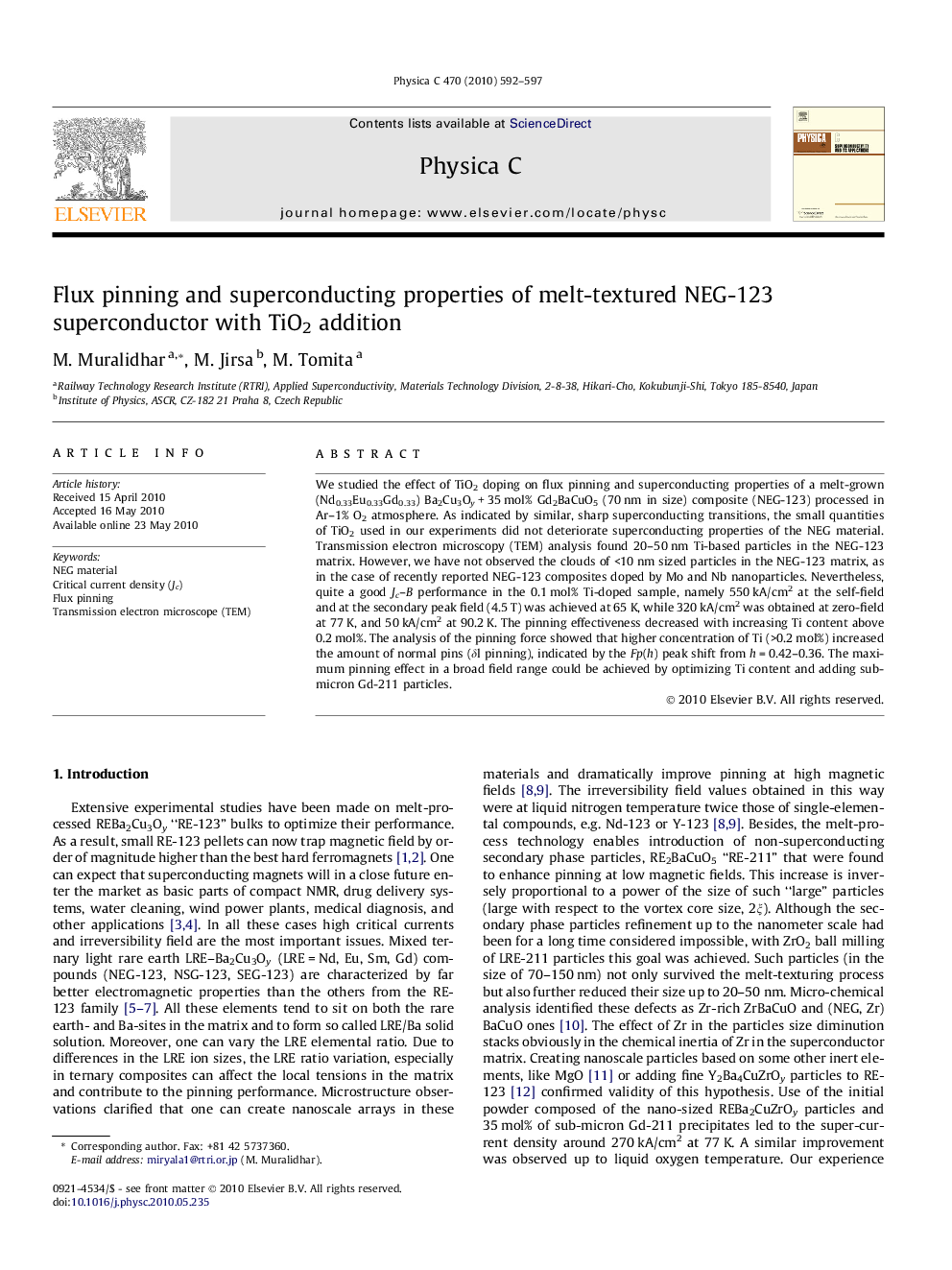| Article ID | Journal | Published Year | Pages | File Type |
|---|---|---|---|---|
| 1819453 | Physica C: Superconductivity and its Applications | 2010 | 6 Pages |
We studied the effect of TiO2 doping on flux pinning and superconducting properties of a melt-grown (Nd0.33Eu0.33Gd0.33) Ba2Cu3Oy + 35 mol% Gd2BaCuO5 (70 nm in size) composite (NEG-123) processed in Ar–1% O2 atmosphere. As indicated by similar, sharp superconducting transitions, the small quantities of TiO2 used in our experiments did not deteriorate superconducting properties of the NEG material. Transmission electron microscopy (TEM) analysis found 20–50 nm Ti-based particles in the NEG-123 matrix. However, we have not observed the clouds of <10 nm sized particles in the NEG-123 matrix, as in the case of recently reported NEG-123 composites doped by Mo and Nb nanoparticles. Nevertheless, quite a good Jc–B performance in the 0.1 mol% Ti-doped sample, namely 550 kA/cm2 at the self-field and at the secondary peak field (4.5 T) was achieved at 65 K, while 320 kA/cm2 was obtained at zero-field at 77 K, and 50 kA/cm2 at 90.2 K. The pinning effectiveness decreased with increasing Ti content above 0.2 mol%. The analysis of the pinning force showed that higher concentration of Ti (>0.2 mol%) increased the amount of normal pins (δl pinning), indicated by the Fp(h) peak shift from h = 0.42–0.36. The maximum pinning effect in a broad field range could be achieved by optimizing Ti content and adding sub-micron Gd-211 particles.
